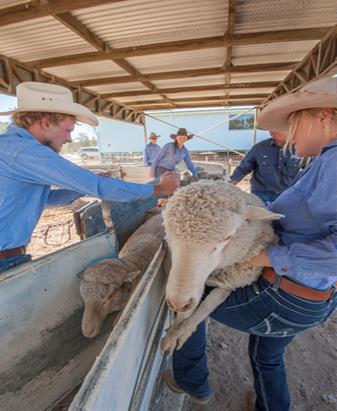Latest listings on Jobs Central recruitment page:
- Youth Development/Education Officer -(Angus Australia)
- Graphic Design/Marketing Officer – (Angus Australia)
- Project Officer – (MINTRAC)
- Feedlot Manager – (Appletree Feedlot)
- Global Market Analyst – (MLA)
- Customer Support/Logistics – (Graincorp)
- Export Coordinator – (Landmark International)
- Pen Rider-Jindalee Feedlot (Teys)
- Leading Hand – Kinbombi Station
Click here to access these and other exciting meat and livestock supply chain jobs currently listed on Jobs Central.

COMING from the land, most red meat industry supply chain stakeholders are fortunate to have the ‘gift of the gab’, but we don’t necessarily transfer that well into talking about our business and culture to potential staff that might consider working for us.
Today, social media allows us to easily share content with enormous potential audiences, but what’s perhaps been lost along the way is the good old-fashioned ‘story-telling’ ability.
Managers and leaders in agribusiness companies of all shapes in sizes should consider creating, finding and sharing their stories to build higher rapport and increase their following, also making candidates more accessible when searching for the next recruit.
Real storytelling is back on the agenda in the jobs market as an effective and authentic way to not only communicate with your team and get your company out there, but also as a real and effective way to attract a ‘passive’ job candidate market. A ‘passive’ job candidate is one who only considers applying for a position, after reading a job description, or reading something interesting or engaging about a company.
Story-telling may make the candidates come to you, especially those not actively seeking work but who could be the right fit for your company. Story-telling can help get the attention of the talent your company may desperately need and also be a powerful way to communicate with your current staff who can help share their own good stories.
A well-crafted story helps people understand what you have said. In other words, a story can simplify the complicated – a world we all live in today.
Here are seven tips for getting your message across through a story:
Have a variety of stories
It is important to have a variety of stories. You don’t want to rely on just one or two stories for every message. A couple of take-home lessons you picked up from a low-stress stock handling school; an important lesson you learned from a respected veteran work colleague; an impressive piece of labour-saving equipment you saw at a field day; the lesson in a near-miss in a workplace health & safety incident, and what you plan to do about it.
Be clear on your message
Ensure that you’re clear on the purpose for sharing your story and don’t dilute your story by having too many messages. One message, one story.
Avoid facts and figures
Bringing facts, figures and statistics into stories starts to reduce the emotional connection your listener will have with your story. Use the data to support your story but keep it separate from your message.
Avoid corporate jargon and management speak
When sharing stories, avoid corporate jargon, management speak and acronyms. These become barriers for your listener when trying to understand and connect with your message.
Share personal stories
Not all your stories have to be personal, but your personal stories have the capacity to create a greater emotional connection with the reader. Your day-to-day stories are the most powerful; you just need to ensure they are relevant and appropriate.
Be authentic
It is not worth the backlash to your credibility and brand to make up or to spin stories. All your stories need to be authentic. People are very good at detecting inaccurate or fabricated stories.
Keep you stories short and sharp
The very best ‘natural’ storytellers prepare and practise their stories. This allows them to be disciplined enough to ensure their stories go no longer than a couple of minutes.
Additionally, you don’t want all your stories to be about one particular topic, such as your kids or when you learnt how to plait a leather belt.
Leaders who ignore the opportunity to story-tell via social media as part of their communication with potential job candidates are doing themselves no favours.
When dealing with people, remember you are not dealing with creatures of logic, but creatures of emotion.
Story-telling via social media is a skill that is well worth investing in. A well thought-out story will help you communicate your business and business culture messages more effectively, and tap into a candidate market who may be looking for exactly what you have to offer.

HAVE YOUR SAY